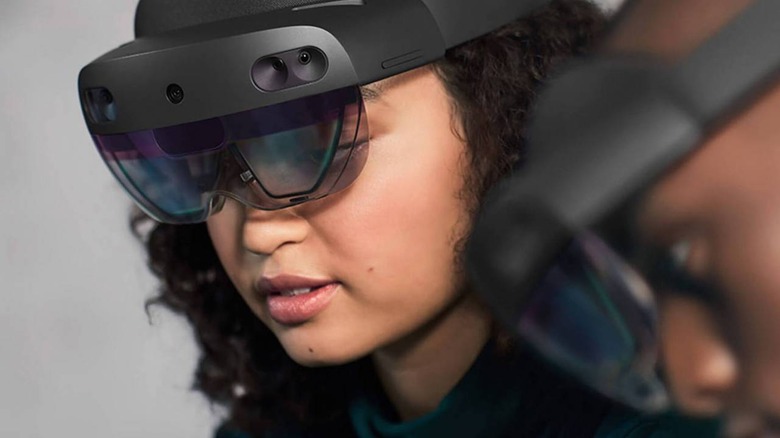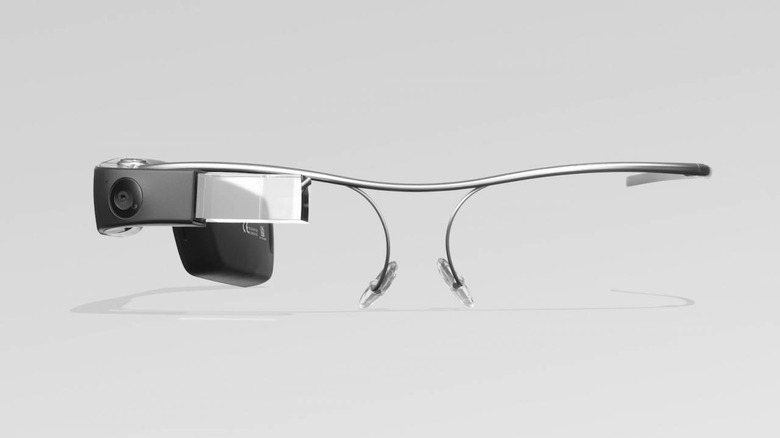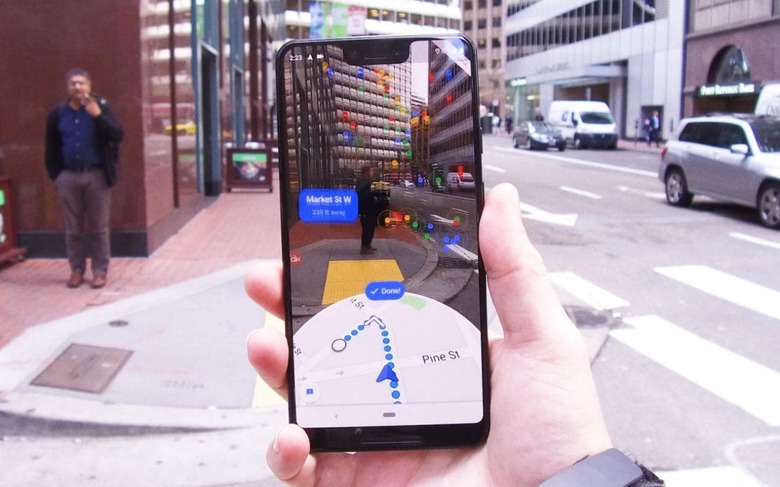Google Glass Is Back - So Is AR Uncertainty
Google Glass is back from the dead, with a new $999 headset that delivers upgraded capabilities, longer battery life, and the promise of new confusion around augmented reality. The Glass Enterprise Edition 2 is, as the name makes clear, not really intended for consumers. Instead, Google is hoping to convince businesses that their workers should be wearing a computer.
It's the audience that Google turned to as its original, consumer-focused Glass vision crumbled in early 2015. Google Glass Explorer Edition was to be the first taste of what benefits a head-born wearable could bring to us. Instead, it birthed the "glasshole" nickname and became mired in privacy fears.
Come mid-2017, and a vaguely-massaged version of the Explorer Edition was reborn as the Glass Enterprise Edition. However it has taken until now, another two years on, before Glass has finally got the hardware and design that it really needed from the outset. While that happened, of course, augmented reality and wearable technology didn't stand still.
Google Glass still isn't Augmented Reality
In the years since Google axed the Glass Explorer Edition, we've seen augmented reality and mixed reality pick up pace. Neither has quite made it into the mass market, at least not in a set of smart glasses. However we do know more about what that AR experience would feel like.

Products like Microsoft HoloLens have begun pushing into enterprise, offering multi-location teams a way to collaborate on virtual objects and projects, as well as into medical settings and retail environments. Magic Leap has gone from being a mysterious, cash-gobbling startup to having a product you can actually buy.
At the same time, consumer wearables have changed immeasurably. The smartwatch category has evolved from notifications and more on your wrist to a fitness and lifestyle accessory. Android Wear has lost much of its luster, hamstrung by manufacturers clinging to old chipsets and Google's own apathetic approach to software and feature updates. The Apple Watch has cemented its place as the heavyweight in the segment.
Smart glasses have seen less acceleration, though consumer models do exist. With Apple and others believed to be working on true AR eyewear, startups like North have taken it into their own hands to do what many of us wanted Google to deliver with the original Glass. Smarter notifications, timely location-based information, and a form-factor that looked less like a Star Trek prop and more like something you could wear day to day.
All of the hardware upgrades we wanted... in 2015
Glass Enterprise Edition 2 checks off plenty of the boxes for what many hoped Glass would evolve into. Some of the changes are obvious ones. A processor, Qualcomm's Snapdragon XR1, which wasn't already out of date before it first launched; a bigger battery and a form-factor more suited to prescription eyewear; maybe most important, a higher resolution camera and an indicator LED for when that camera is actually active.

The key way you interact with Glass, though, hasn't changed. Google is still using an optical display module, and still with the same 640 x 360 resolution. It's suspended just above your right eye: you glance up and slightly across in order to look through it.
Glass Enterprise Edition 2's eyepiece is transparent still: you can see the world through it. However it's still not capable of "real" augmented reality.
AR is about adding digital information to the real world. That might be overlaying game graphics atop physical objects like a table, or inserting navigation instructions into your view of the road ahead. It could be a HoloLens-like shared workspace, with a virtual car engine or a set of holographic lungs that a group of people could all collectively interact with.
Glass still doesn't do any of that. It's not about blending real and digital into one perspective, and it never has been. The AR label attached to it is a misnomer; all that has ever been intended is a hands-free way of accessing the power of your connected smartphone and cloud-based data.
Google's real AR plans are still a mystery
At the same time as Glass went from a skydiving novelty, to a public joke, to an enterprise accessory, Google has also pushed its work on augmented reality. Project Tango, handiwork of the Advanced Technology and Projects (ATAP) group with the company, seemed for a while like its combination of 3D mapping, computer vision, indoor navigation, and more would be the cornerstone of Google's AR product. Only, in late 2017, for those ambitions to fizzle out.
Into Tango's place stepped ARCore. Cheaper to implement and easier to develop for, it picked up where Tango left off. Since then, although ARCore did get some attention at Google I/O 2019 earlier this month, it still feels much like an afterthought. AR elements in Google Maps are probably the most obvious implementation of the technology, but it's a far cry still from any sort of true augmented reality strategy for consumers.
Glass is still a sideshow
Google isn't selling Glass 2 to consumers. While it may have a $999 price tag attached, the company is only interested in enterprise buyers at the moment. Its applications, too, are focused on work, rather than the consumer slant that got us so excited about the original wearable.
Augmented reality it is not. Neither is it an indicator of any sort as to where Google sees AR progressing. Glass is, and always has been, a phone on your face, and Google's vision of consumer wearable tech, mixed reality, and mass-market applications for the form-factor beyond the smartphone remains cloudy.

